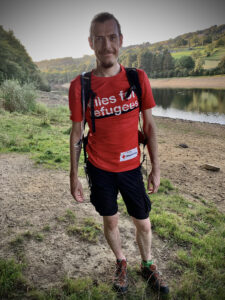South Yorkshire’s emergency services are urging people to be sensible and stay safe over the coming weeks, during what they say will be a ‘very different’ bonfire period for everyone.
Trick or treating is being discouraged, in order to prevent the spread of Covid-19, as are Halloween and bonfire parties that break the current social distancing rules set out by the Government.
Meanwhile, firefighters are asking people to take extra care with fireworks and to avoid having garden bonfires that could grow out of control and tie up fire service resources.
The guidance comes as part of Operation Dark Nights – a campaign that is run jointly by the county’s three emergency services each year.
“We know how much people look forward to Halloween and the bonfire period, and clearly we don’t want to spoil the party after a tough year, but it’s so important that people stay safe,” said South Yorkshire Fire & Rescue’s Station Manager Steve Jones, who helps lead the joint police and fire community safety department.
“With big, organised bonfire and firework displays being cancelled across the county, we expect people will be tempted to do their own. This is fine, but we do ask that people be sensible and take note of our advice around this.”
“Firstly, we really don’t want people be having garden bonfires. They spread so easily and tie up our resources. However, if you must have one, keep it away from trees, sheds and fences, and never use petrol or other accelerants to get it going.
“Secondly, if you’re going to use fireworks, only use genuine ones, follow the manufacturer’s instructions and, please, be sensible. Also, remember there are laws around when you can and can’t set them off.
“Last, but not least, is a plea around helping stop the spread of coronavirus. Please ensure you stick to the current laws and guidance. We all need to keep doing our bit and not use Bonfire Night as an excuse to let our guards down.”
Traditionally, staff from both the police and fire service have visited schools to talk to children about anti-social behaviour, trick or treating, fireworks and all things Bonfire Night. These visits won’t be taking place this year, due to the pandemic.
However, a joint effort between both agencies means that school pupils will still be getting vital input on these subjects. Instead of visiting each school, firefighters and police officers have filmed a series of videos that will be played in classrooms across South Yorkshire.
South Yorkshire Police Superintendent Sarah Poolman said: “We know this year will be different for everyone, but we want to ensure that however you celebrate, you are safe.
“It is important that whilst celebrating we don’t forget about Covid-19 and remember that we all still have a responsibility to keep each other safe.
“Your neighbourhood officers will be on patrol in the evenings to tackle any anti-social behaviour and breaches of the Covid-19 guidelines.
“As we increase our patrols, please remember that this is an extremely busy time for officers and call takers in the control room. We are asking our communities to think before you call 999 or 101.
“We have to prioritise the calls coming in to ensure our officers can respond to the most time critical and serious of incidents. We are asking those reporting a non-emergency crime do so through the online reporting form on our website.”
Speaking on behalf of Yorkshire Ambulance Service, Locality Manager, Jeremy Seymour, said: “The volume of work for Yorkshire Ambulance Service has significantly increased over the last two weeks and this has been reflected in the change to the local COVID Alert level this week in South Yorkshire.
“The Ambulance Service, as well as all local hospitals, are working extremely hard to provide the services everyone needs and deserves. We will continue to provide the emergency pre hospital care and support whenever and wherever we are needed.
“Please help us to protect you and the people closest to you by continuing to follow the advice given and support the Ambulance service to concentrate on those most in need.”

